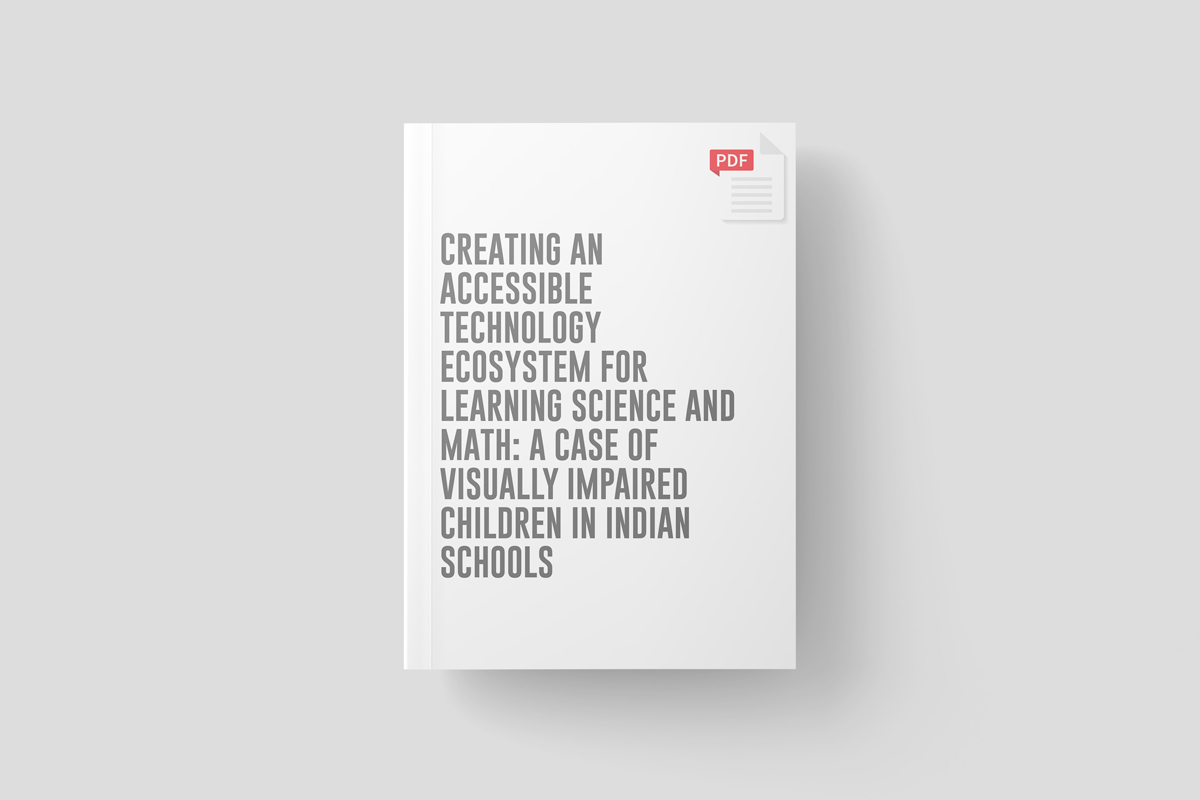


Authors: Supriya Dey, Vidhya Y, Suprgya Bhushan, Mounika Neerukonda, Amit Prakash
In India, hardly any visually impaired (VI) person pursues Science and Maths beyond the seventh grade
or takes up a career in the Science, Technology, Engineering and Math (STEM) fields. This is despite the
country producing more STEM graduates than any other in the world or being home to the largest
population of VI persons. While Information and Communication Technologies (ICT) products are
increasingly being used in improving education and professional activities, the inherent visual bias in
ICTs forces VI persons to depend on other Assistive Technologies (AT), which are seen to have a huge
potential in making their personal and professional lives more accessible. We, however, do not find much
evidence of ICTs/ATs being designed or used to address the above incongruity in the Indian education
and professional space where VI persons continue to be excluded. Through this study, we seek to
understand the motivations behind the existing design focus of ATs and the reasons behind their low
relevance in STEM education for VI persons in India. Through an ethnography involving both the
demand and supply side stakeholders in this space, over a 9-month period and close to 100 interviews
with both VI and sighted persons, teacher training centers, technology design labs etc. and using a
multidisciplinary approach to disability, we find an absence of integrative principles and structures
guiding ICTs/ATs design and use. In conclusion, we distill our findings to propose recommendations
which lead to the creation of an assistive technology ecosystem that can bridge the existing gaps in
practice by allowing the different players to transcend their traditional disciplinary orientations.